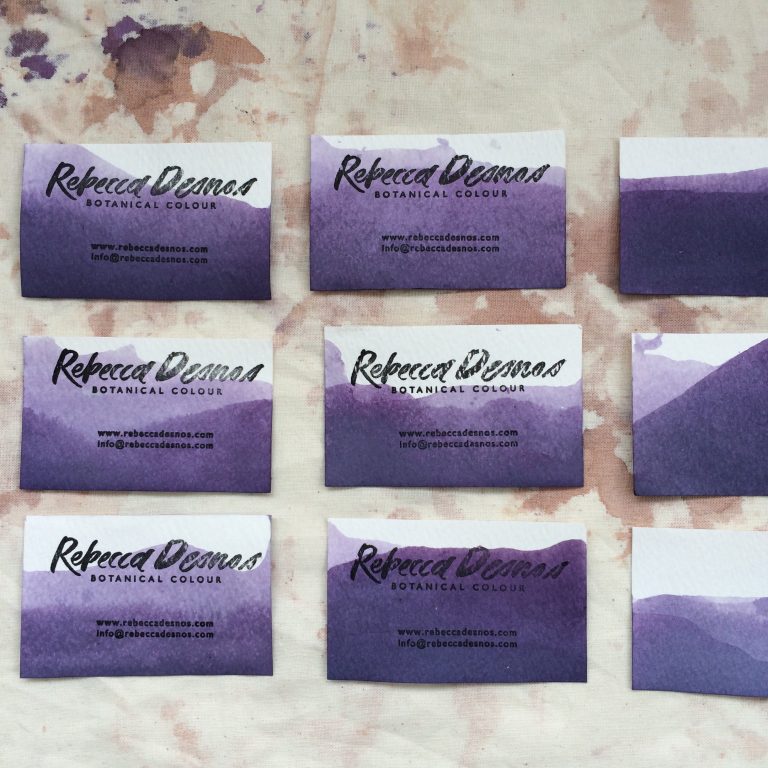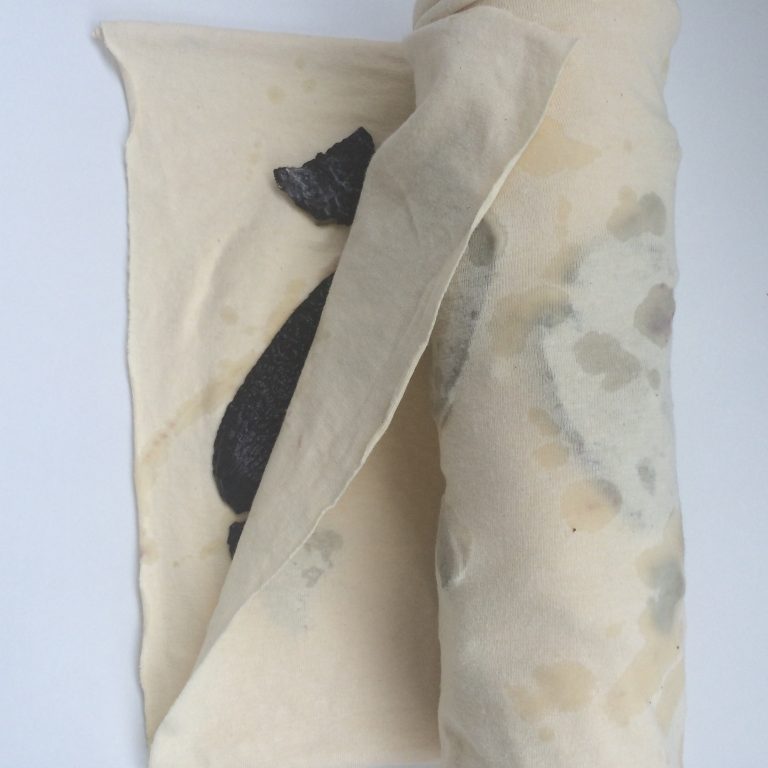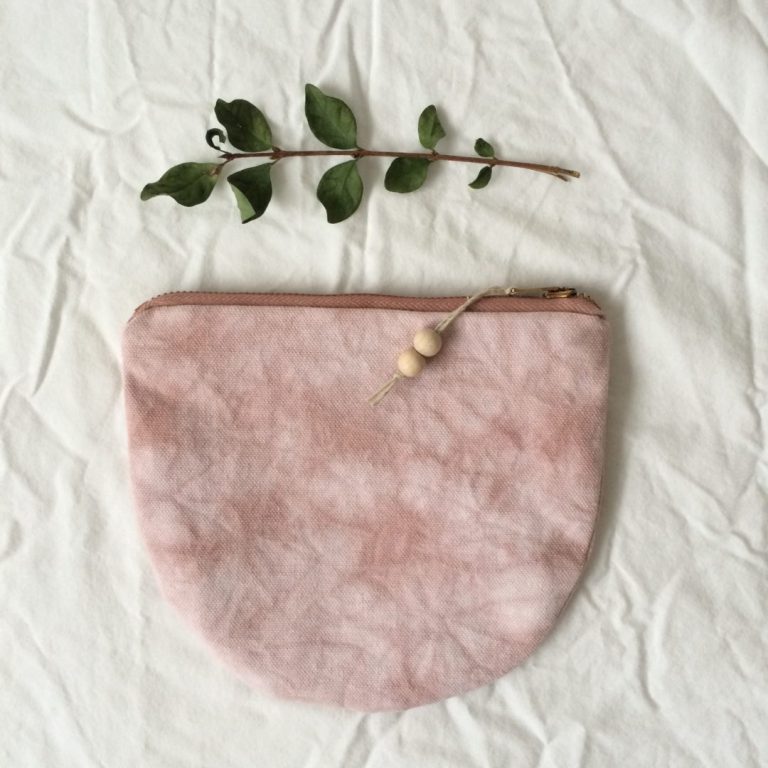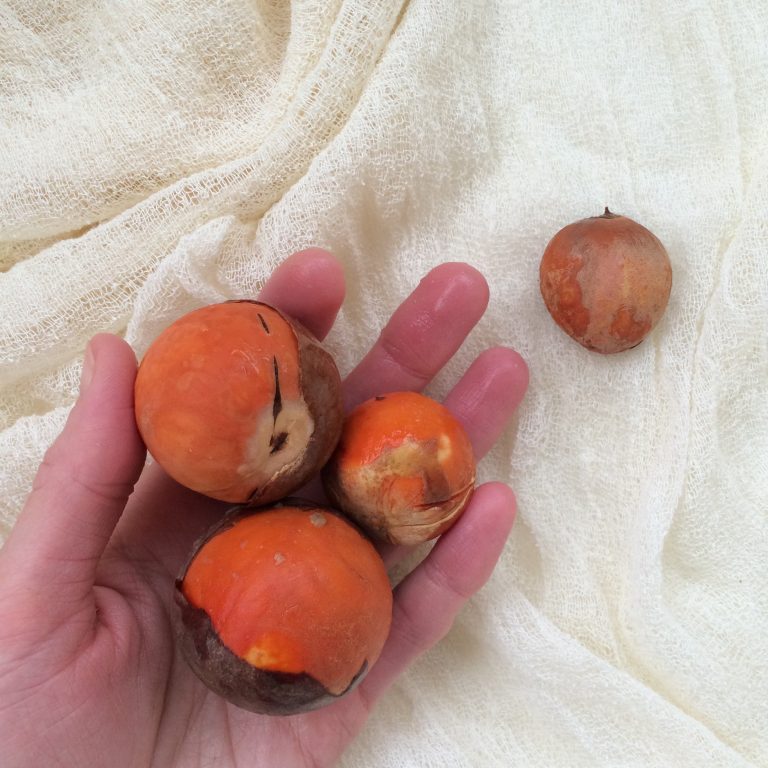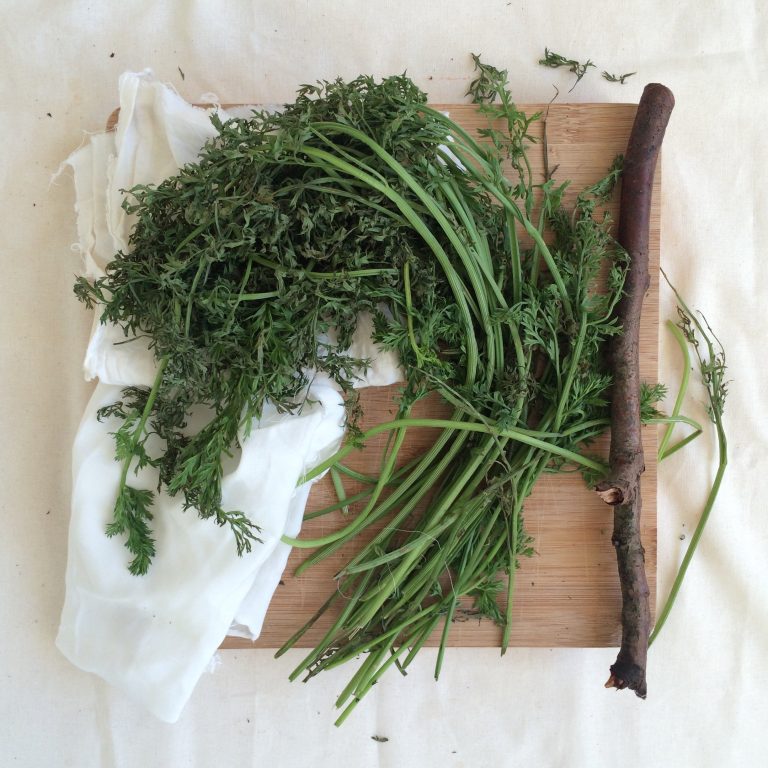Have you ever wondered how to start a dye garden? Which plants should we begin with? If so, then you’ll love this interview with Liz Spencer – The Dogwood dyer. I started a small dye garden on my balcony this summer and one of the people who inspired me to do this was Liz, the textile artist behind The Dogwood Dyer. Today I’m honoured to welcome Liz to my blog. Liz is an incredible designer, natural dyer, grower and inspiring artist. So go and grab a cup of tea (it’s quite a long one!) and enjoy this inspiring chat with Liz about her plants and the tips she has for us…
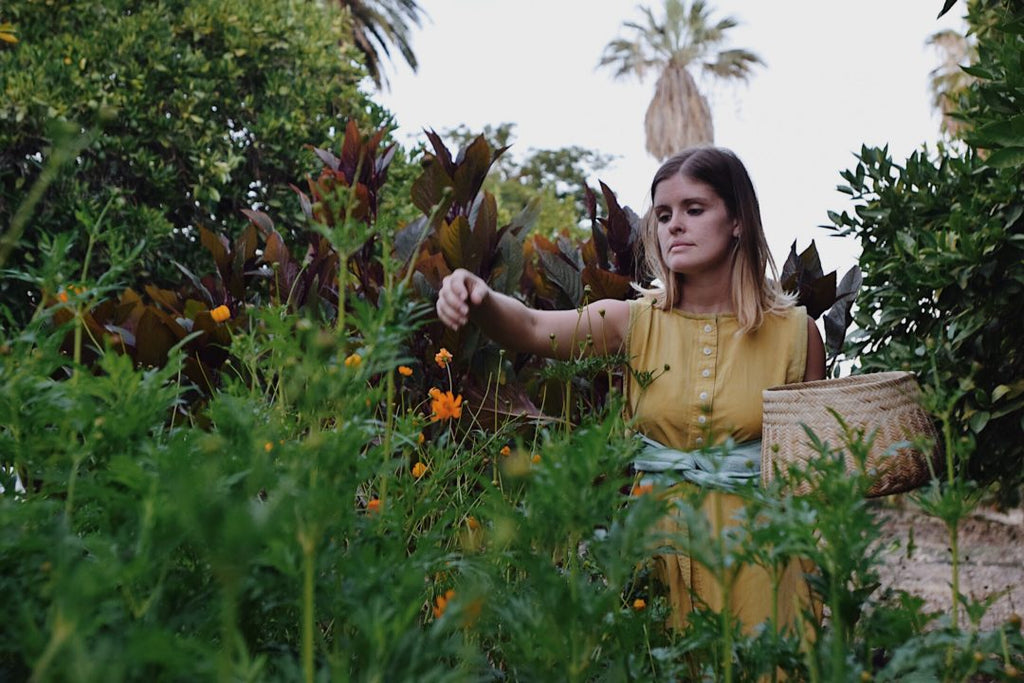
For the past few years you’ve been living in a house on your aunt and uncle’s heritage orange grove. Amongst the orange trees, you’ve developed a beautiful dye garden full of so many incredible plants. Did you plan the garden at the beginning or did it slowly take shape over time?
Yes, for the past three years we’ve had the honor of taking care of an old farmhouse with an orange grove which has been in my partner Sam’s family for generations. It’s quite a departure from the Brooklyn apartment that was our abode before! I’ve had more space than I can reasonably handle myself as a mom of two small kids, but it’s been a delight to see the dye garden that I started 3 years ago develop slowly.
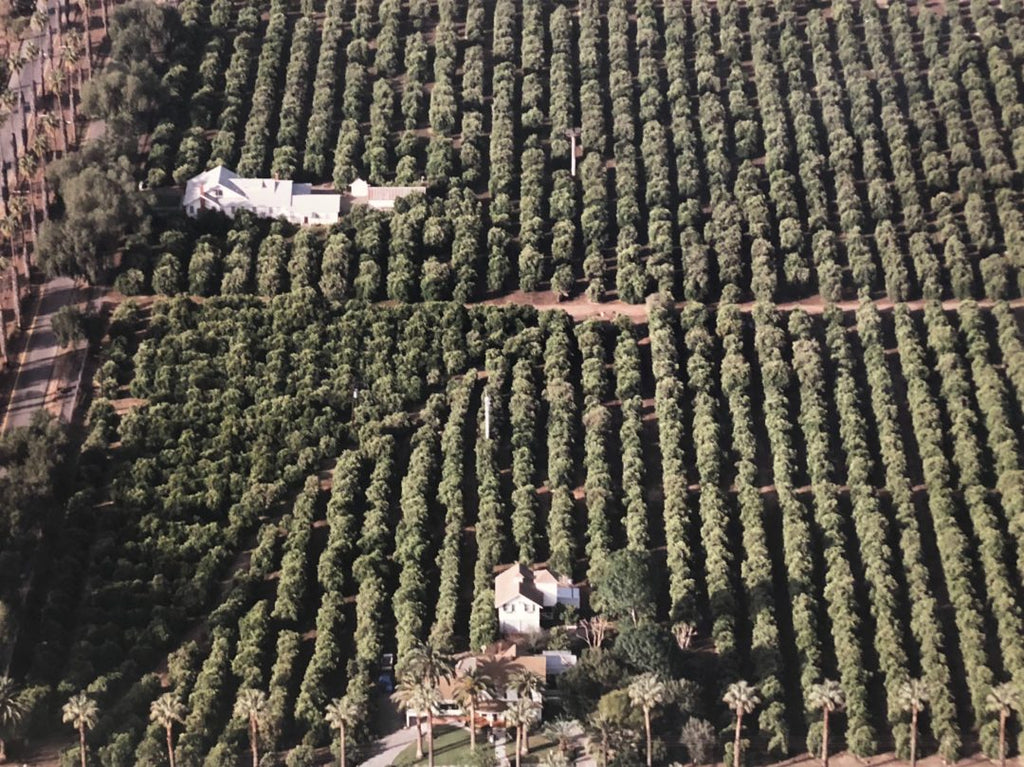
Above: The farmhouse and orange grove.
Below: Bedlinen dyed with homegrown indigo.
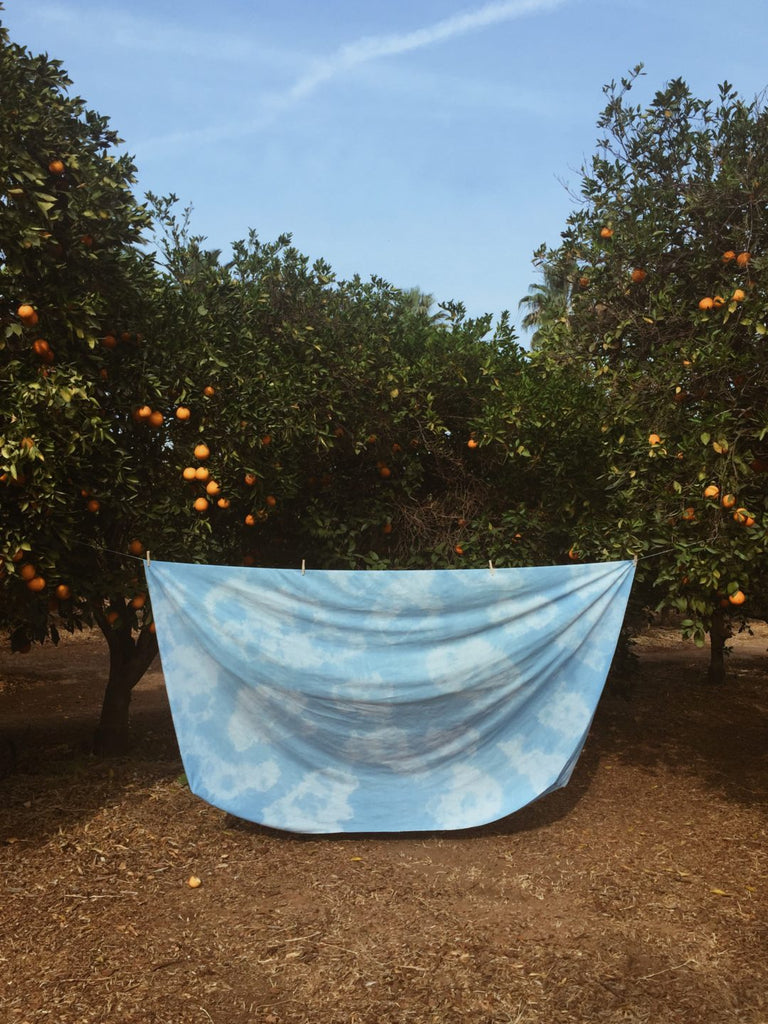
This year was most certainly the most productive as well as most informative yet for my education as a gardener and grower of color. I have cut down on the the variety I had grown in the past and primarily now grow under 10 varieties of plants to complete my palette of colors. I’m thinking of narrowing it down even futher next year. The main varieties I currently grow include:
- Madder for red (Rubia tinctoria)
- Japanese indigo for blue (Persicaria tinctoria)
- Sulfur cosmos for orange and yellow (Cosmos sulphureus)
- Coreopsis for orange and brown (Coreopsis tinctoria)
- Purple pincushion flower for purple to green to steel grey blue (Scabiosa atropurpurea)
- Dyer’s chamomile for bright yellow (Cota tinctoia)
- Hopi purple sunflower for lilac and grey (known as Tceqa’ Qu’ Si in Hopi – Helianthus annus)
- Marigold for golden yellows (Tagetes erecta)
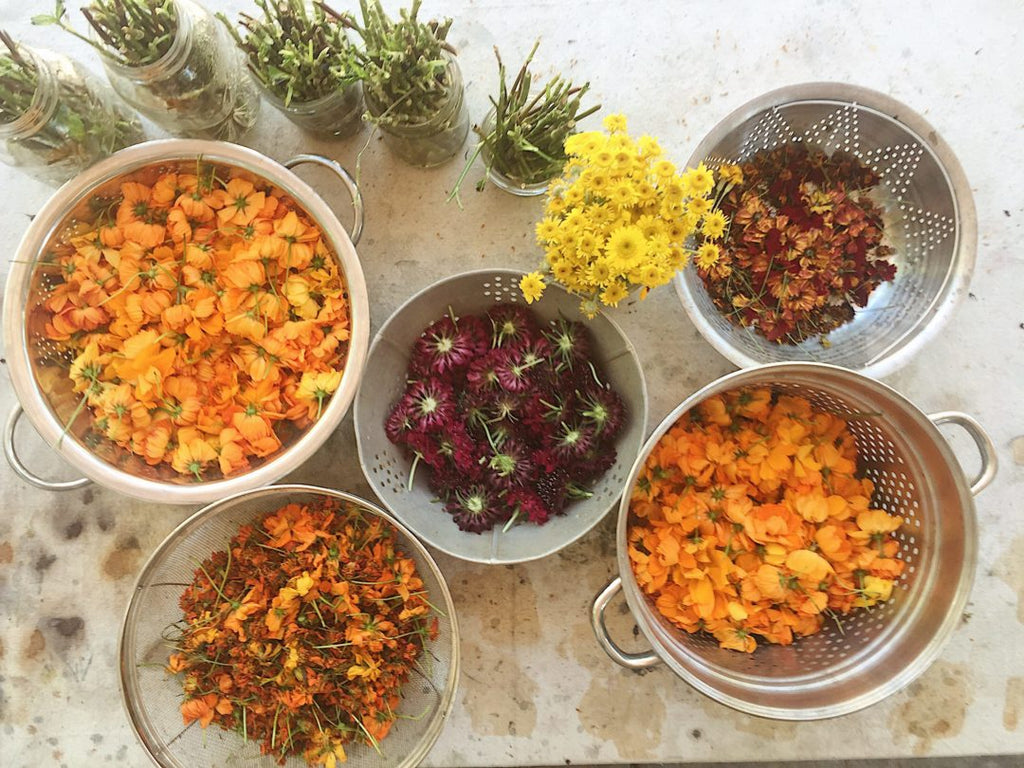
We also have other plants here on the property whose parts I utilize for the dye pot including fig, avocado, orange, loquat, hibiscus, eucalyptus, and pomegrante.
Originally I planned to include even more plants in the garden, but over time I’ve realized what does well here and which plants yield the most dye and are the most pleasure to grow, either suiting the environment or fulfilling the color wishes I have. For instance, I no longer grow purple basil as I have in previous years because I can achieve similar colors with my purple pincushion flowers. Also I’ve tried woad in the past but now only grow japanese indigo as it fares better here. I’m considering culling either chamomile or marigold to limit myself to one yellow producing plant (although it will be a tough choice between the two!) since there are also so many plants around that give yellows in all shades.
I’ve found that simplicity is key for me right now in most aspects of my life. I’m in the earlier years of parenting while my babes are young and they are in need of me so much, so simplicity is best for all other tasks that I put in front of myself whether it’s to do with my business or fun interests (or both!). Though, I dream of maintaining a huge garden on my own land one day with a greenhouse where I can grow many varieties of dye plants including a few more tropical loving varieties of indigo. So I’m already planning out my aspirational dye garden in my mind – probably for when I’m retired – ha!
Have you grown and established any dye gardens in the past?
I started my journey into natural dyes in a sort of backwards way, by planning and building a dye garden before I had any experience dyeing with plants. It was a fun extracurricular activity in collaboration with a local community garden while at graduate school in London. The dye plant portion of the community garden was comprised of 3 raised beds. Seeing the whole transformation from an unused urban area to a thriving green space producing sustainable dyes and education for the school and community got me hooked on natural color! I was able to connect with people in the neighborhood of my school location in Hackney and get to know people outside of my program and bubble of sustainable fashion study. The garden has expanded to other sites across London through the University of the Arts locations although I’m sad to say that the original site is no longer there as the land was due to be developed.
When I finished my degree in the UK and returned to the states I took part in the first year of a special urban dye garden in Brooklyn while interning with the Textile Arts Center. It was a unique opportunity to take part in a CSA modeled garden (just like a food CSA – or a produce-delivery program) where everything we grew and harvested was delivered to fiber artists who had invested at the beginning of the season for natural color grown in the city.
While living in NYC I also started a few small raised bed gardens in my neighborhood that my partner kindly built for me in sidewalk tree pit.
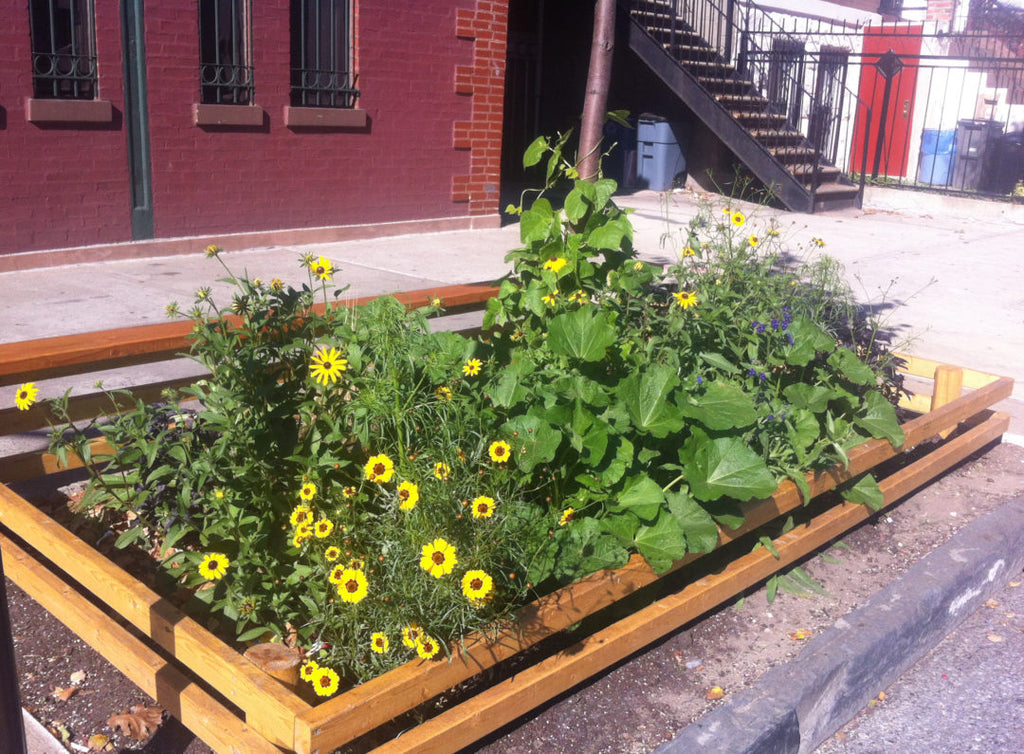
Above: Brooklyn dye garden planters.
Below: Tree planters designed by Liz’s partner, Sam Barrett.
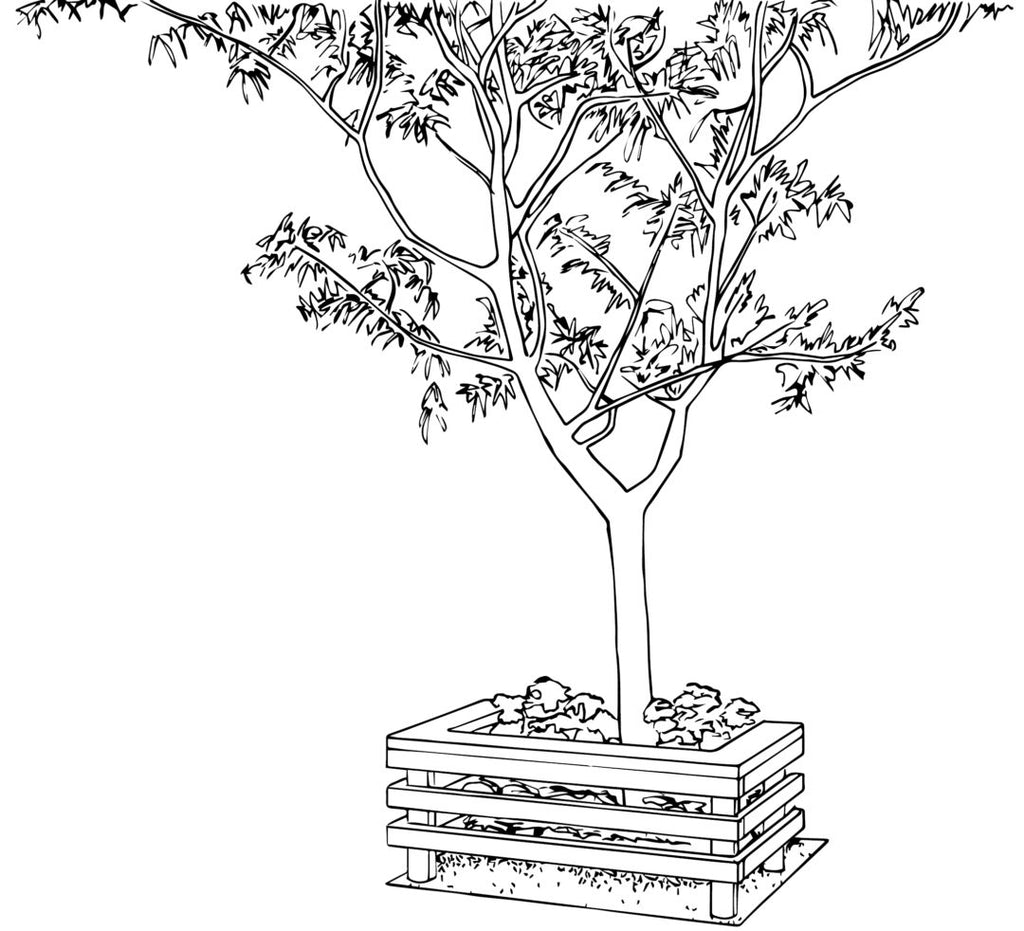
It was a great experience learning how to problem solve tending plants in an urban environment where the garden beds were subject to what and whoever. I was able to manage my dye practice and use waste water to feed the plants which was a big victory for a water-intensive practice like dyeing. We had a few unexpected setbacks where plants were either mistakenly cut down or didn’t thrive, but the experience taught me that I could make sustainable dye gardening work no matter where I landed.
My current garden in the orange grove is going dormant and I removed irrigation and dug up my 3 year old madder root this week. It was a very exciting moment for me having tended this plant for so long, to finally reap the red giving benefits!
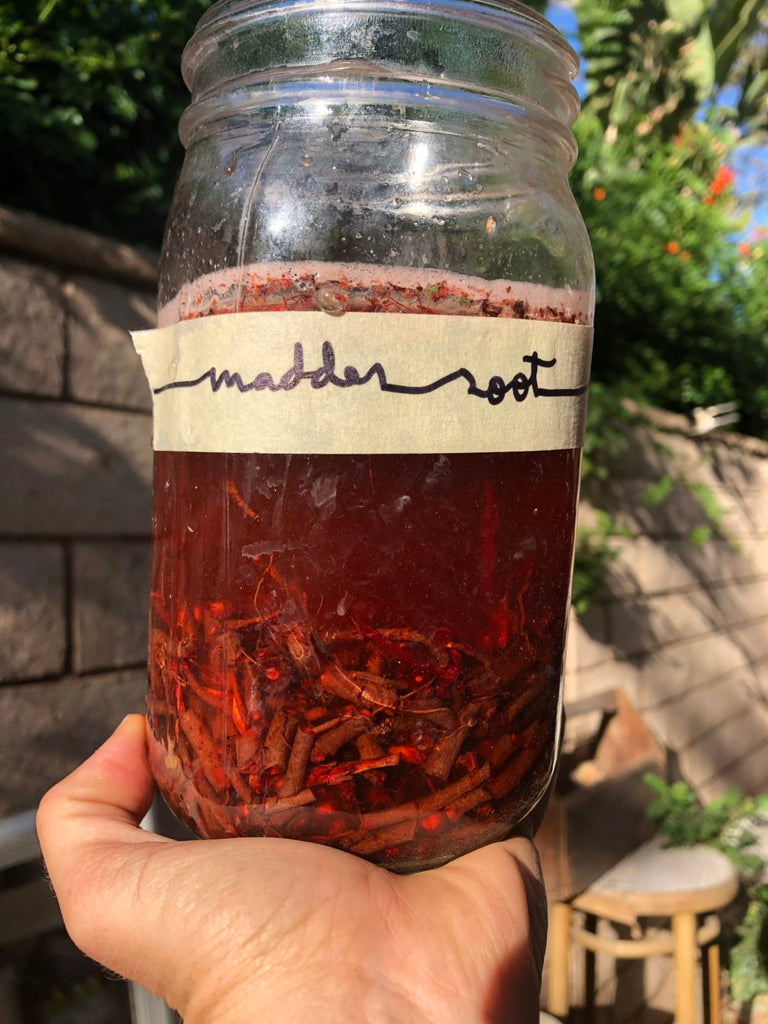
This end of this dye garden is very bitter sweet, but I’m looking forward to whatever may lie ahead for dye gardening potential.
This garden so far has given me the most as far as material for the dyepot and has really inspired a thirst for more knowledge of growing plants sustainably. I dream of taking the time to earn a Master Gardener Certificate from a local native plant nursery here. I’m learning all the time about how the plants can give back to us with medicinal and other beneficial properties and I’m constantly in awe of how magical nature can be.
We haven’t sprayed pesticides in the grove since we arrived – which was the common practice before – and Sam has remarked at how many more lizards, birds and insects he sees now than when he was a kid. I feel grateful for the opportunity to change the landscape in that way at least.
What have been some of your most successful dye plants that you’ve grown and what dye colours have they produced?
My sulfur cosmos has been so resilient and productive – I really can’t keep up with the amount of flowers they produce. They’ve proven to be drought tolerant which is important where I live in southern California, and they are very easy to care for – I really can’t sing the praises of this dye plant enough. The flowers and plant leaves and stems can make a range of colors from yellow to tangerine, burnt orange and apricot. The seed is also really easy to save and collect for future growing.
Below: Liz with her sulfur cosmos flowers.
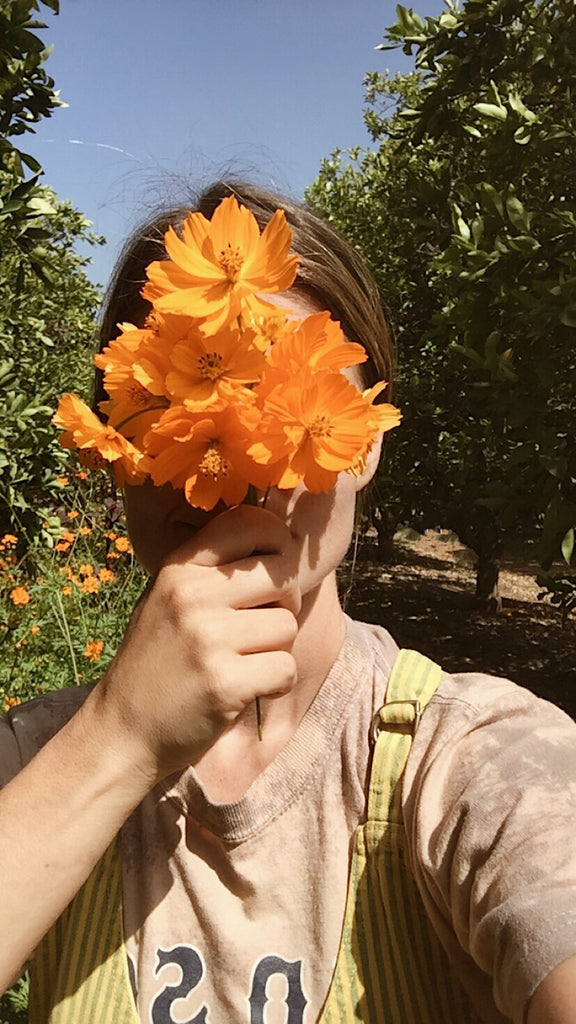
My madder root did really well in our slightly alkaline and calcium-rich soil and I was pleasantly surprised at how much root I was able to harvest after starting with just a single cutting from a local dyer friend 3 years ago. I’m looking forward to seeing how it fares in the dyepot – my little tests so far have been promising for a deep and clear red. It was an act of patience waiting for 3 years for sure!
Below: brilliant red from madder roots.
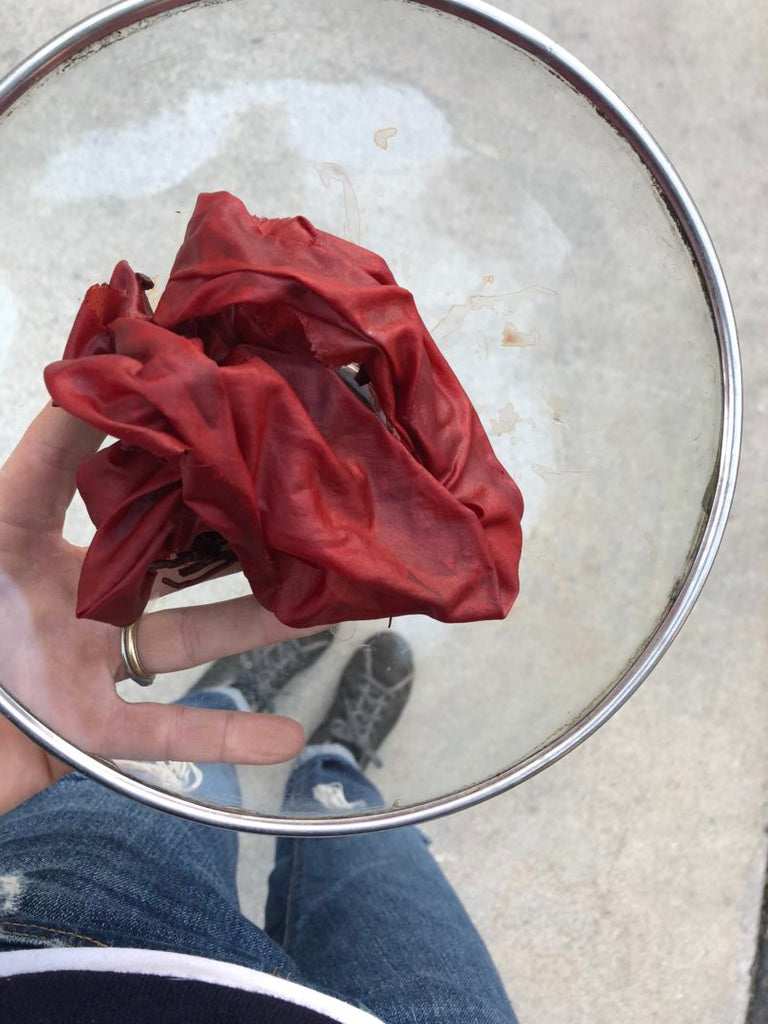
My Japanese indigo did well this year and all the energy, planning and work I put in at the beginning of the spring and summer yielded over 200 plants and 1000g of pigment over 3 harvests. It doesn’t sound like much, and if you think about it, it really isn’t a ton of return for all the effort I put in, but it’s given me a huge appreciation for those growing and supplying natural dyestuffs, especially if grown organically and sustainably. So far there’s been nothing like the experience of rendering blue pigment of my own from green plants.
Below: Liz with her Japanese indigo plants in the orange grove
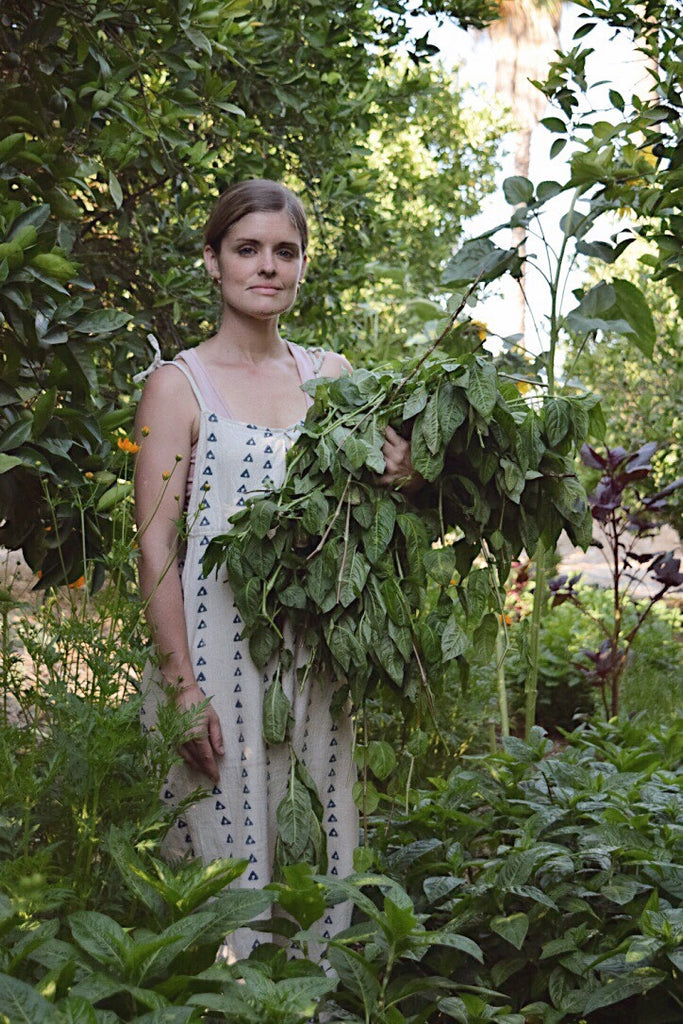
How does the climate in California influence what you can grow?
The climate here is semi-arid with very hot and dry summers. California has been in a drought since the year 2000, so the efficiency of water use in my practice including my garden are high priority for me. I mulched my garden beds to hold in moisture from our drip irrigation and primarily recycle the rinse and waste water from the process of dyeing to water the grove. The lack of consistent rainfall here has definitely impacted my garden practices and the plants I now chose to grow. I’m currently seeking seeds for an Australian variety of indigo that is more drought tolerant as there is no native variety to the southwest of the US that produces blue. Fortunately, growing in the grove where the orange trees provide partial shade in this very hot sunny location has been the key to happy plants that might have easily been scorched like the Japanese indigo.
Can you tell us more about your gorgeous Japanese Indigo plants? How did the indigo extraction go this summer?
Yes, the whole 9 month process starting in February was assisted by friends and family who helped with everything from installing irrigation, to transplanting mature plants, to cutting and harvesting, to alkalizing, and aerating the extraction to create the magical blue indigotin pigment. I couldn’t have done it all myself (especially while looking after 2 young babes) without the support of others who were interested in seeing and helping with the process.

Above: Extracting indigo.
Below: The finished indigo pigment.

I’ve been saving seed from my plants for 3 seasons and it’s been a bonus to have more seed than I can use myself so I’ve been able to sell them and share the indigo magic with others all over the world since I’ve seen such an increase in interest of growing blue over the past few years. It’s definitely a labor of love to grow the quantity I wanted in order to make the endeavor worth the extra effort of extracting for pigment (I wanted to grow at least 100 plants for pigment extraction), but I love the fact that there’s always the option of fresh leaf processing with smaller quantities of indigo bearing plants using a protein fiber for teal aqua tones (or a protein soaked fiber as you’ve so beautifully demonstrated with your plants, Rebecca!). I’ve also been able to dry and save a considerable amount of indigo leaves this year to experiment with creating a vat in a method I’ve never tried this winter, so I’m very much looking forward to that!
Below: fresh leaf indigo on silk
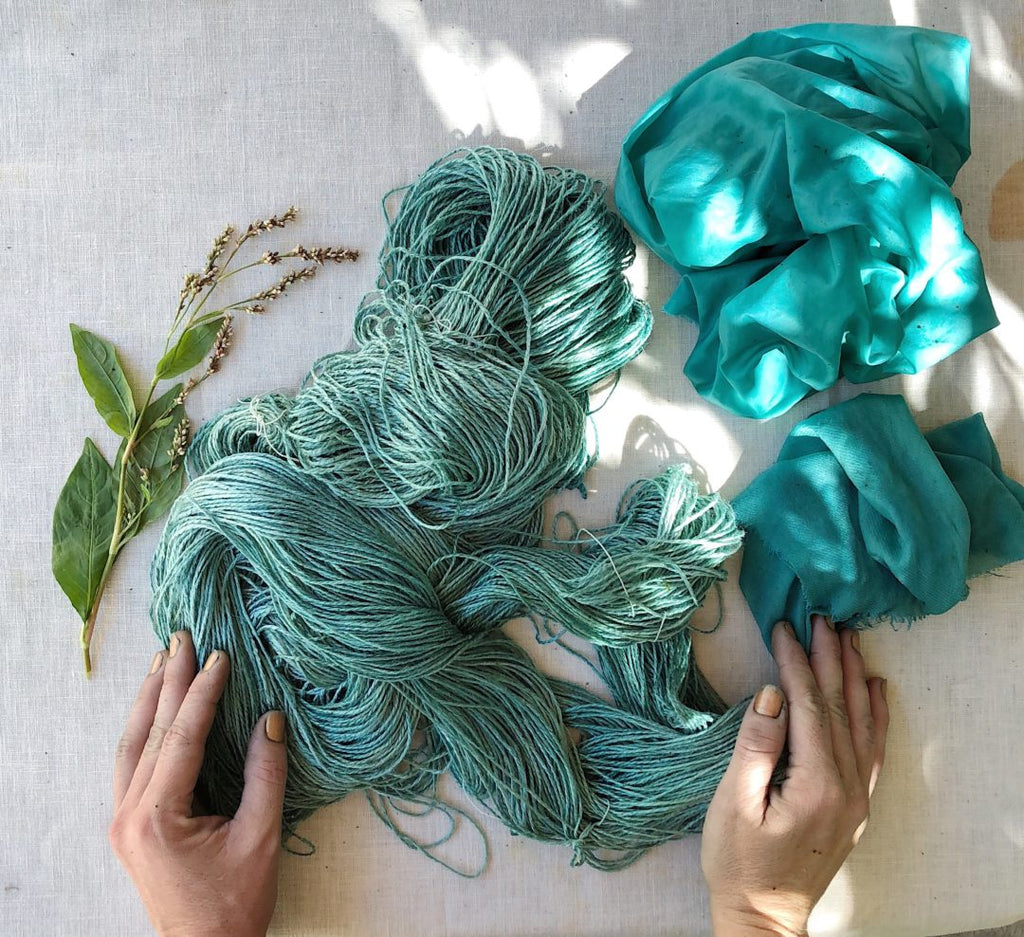
You’re moving very soon. Do you plan to establish a dye garden at your new home? How will it be different and what do you hope to grow?
Yes, our new home is a little seaside apartment and is a huge reduction in space from what we currently have, so my current plans are to grow plants in planters on my deck. It actually comes as somewhat of a relief, so that I can still grow plants for color, but less garden means I’ll have a bit more time to focus on other long neglected projects and dreams.
The climate there is more mild, but we have plenty of sunshine, so I think I’ll be able to pull off many of the same varieties of plants I’ve been growing in the past years. There is a big park behind us as well that belongs to the Boys and Girls Club, so I have tentative plans as well of proposing a child’s dye garden project.
It can be quite overwhelming when planning which dye plants to grow and it’s tricky knowing where to begin. I know that we all have different conditions, amounts of space etc, but can you share any tips for planning a garden and choosing dye plants?
Yes, I would say that even the smallest area can become a place for growing color. Start with a plant that gives flowers in a somewhat short amount of time like cosmos (shown below) or marigold, so that the experience is rewarding and feels worth the effort. I would also highly suggest getting in contact with others interested in the same idea of growing color and asking their favorite plants to grow. There are awesome communities online like the Indigo Pigment Extraction Facebook group or local native plant nurseries that always need volunteers where you could easily connect with like minded and knowledgeable plant enthusiasts.
Below: Liz dyeing with cosmos
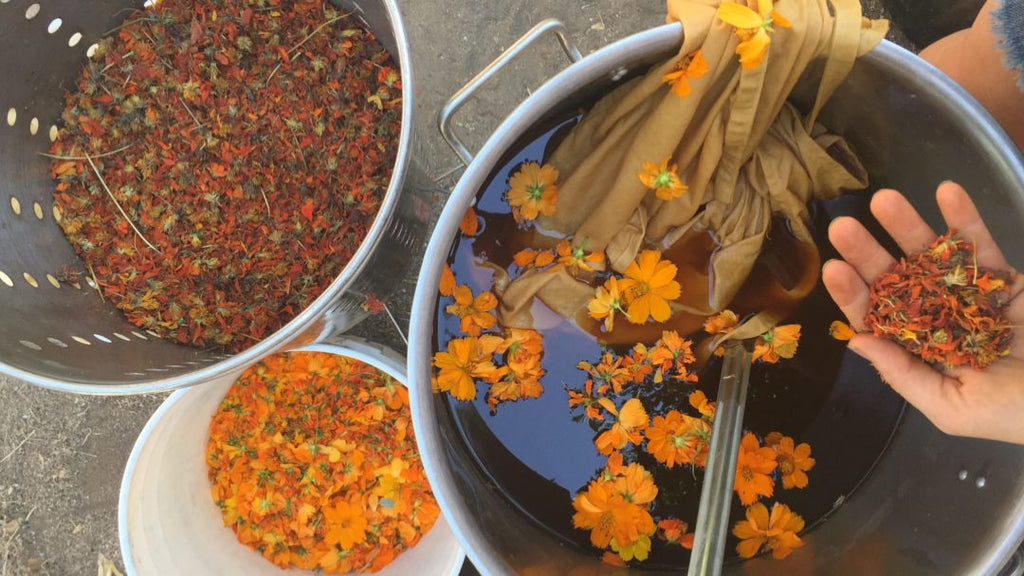
Thanks for the fascinating chat, Liz. I’ve learnt so much from you! I wish you all the best with your move and look forward to seeing your future dye garden evolve!
- Follow Liz on Instagram @thedogwooddyer.
- Visit Liz’s website to see her next workshop dates.
- Order naturally dyed clothing and dye plant seeds from Liz’s online shop.
(All photos owned by Liz Spencer and posted with permission.)


